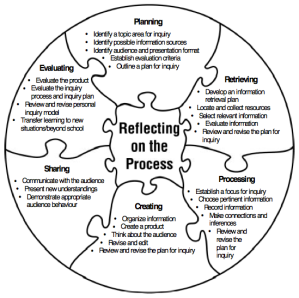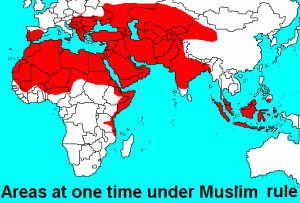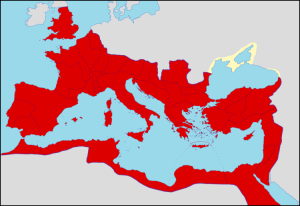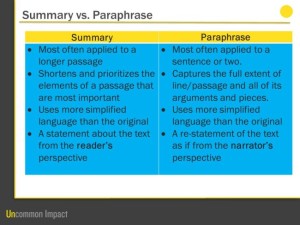People have asked me when I teach project-based learning or inquiry, do I teach my students about the process. Yes. The process is really important to what students are learning: So at the beginning, student are introduced to the stages of the process and are eventually given more and more responsibility and freedom over the process as they acquire the skills needed. At the same time, I don’t belabour the process, because, it doesn’t make a lot of sense to them without action behind it.
So at the beginning, student are introduced to the stages of the process and are eventually given more and more responsibility and freedom over the process as they acquire the skills needed. At the same time, I don’t belabour the process, because, it doesn’t make a lot of sense to them without action behind it.
One of the things many teachers have also mentioned to me is “there is content to teach”. We all have content to teach. However, content is not meant to covered. Blankets are for covering things. The role of the teacher is to help students discover. Content can actually be discovered, and I’m not talking about assigning page 89- 92. Discovery is how they learn best. Students should Discover how to fail. Discover how to create. Discover how to reflect. Discover how to collaborate. Discover their voice. Discover who they are. All of this should be happening in our classrooms.
Inquiry or Project-based learning does not mean the classroom is a free for all. Great Inquiry requires planning. For example, if I were to create an inquiry unit around the Golden Age of Islamic Discovery I would start with my essential questions:
- How did the Arab empire become so large and influential?
- As a historian, research and evaluate one area of the Arab Golden Age that influenced modern society.
- How did this vast, knowledgeable Empire disappear?
| Core Competencies in Islamic Golden Age Unit: |
| Use Social Studies inquiry processes and skills to: ask questions; gather, interpret, and analyze ideas; and communicate findings and decisions |
| Assess the significance of people, places, events, and developments at particular times and places (significance) |
| Determine what is significant in an account, narrative, map, and text(significance) |
| Characterize different time periods in history, including periods of progress and decline, and identify turning points that mark periods of change (continuity and change) |
| Determine what factors led to particular decisions, actions, and events, and assess their short-and long-term consequences (cause and consequence)go |
| Make ethical judgments about past events, decisions, and actions, and assess the limitations of drawing direct lessons from the past (ethical judgment) |
| Explain different perspectives on past or present people, places, issues, and events, and compare the values, worldviews, and beliefs of human cultures and societies in different times and places (perspective) |
By outlining the three questions for my students, I start with a What do we Need to Know Chart, and they can fill it up with all the things we need to might need to know. This is a working draft. We can come back to it at anytime. I then create a second chart, How might we learn these? You might get a kid who says the internet, but I always have them try to dig deeper than something that easy.
For this particular unit, I would then introduce the unit with this video
What’s interesting is that the Roman Empire is often considered the largest to ever conquer the world. And yet, if you look at the map

 of the areas under Muslim rule, it was a much larger empire. This is something I would consider exploring with my students. Is it true? How do we find out? Why have we been sold the bill of goods that the Romans were so much bigger? Why are we taught about the Romans every year in grade 7 and why do we never hear about the Islamic Golden Age even though its discoveries are still incredibly influencle today?
of the areas under Muslim rule, it was a much larger empire. This is something I would consider exploring with my students. Is it true? How do we find out? Why have we been sold the bill of goods that the Romans were so much bigger? Why are we taught about the Romans every year in grade 7 and why do we never hear about the Islamic Golden Age even though its discoveries are still incredibly influencle today?
Using Content To Teach Skills
One of the reasons I teach the inquiry process is because I intentionally use the content to teach the skills. The first skill is summarization. I’ve found over and over, even at the high school level, my students cannot effectively summarize a text into a paragraph, or a paragraph into a sentence I start by giving them 2 different techniques they may choose to use.
Here is how it works:
First I teach the difference between summarization and paraphrasing. There’s a difference. Many kids don’t know that. Some adults don’t either.

Read the article or section of text.
Create and fill-out a 3-2-1 chart like this:
| 3 Things You Found Out from the passage | 2 Interesting Things from the passage | 1 Question You Still Have after reading the passage |
| 1.
2. 3. |
1.
2. |
1. |
- From these 3-2-1 points you collected you would then write a short paragraph to report your findings.
Reading for Gist
The word Gist means to look for the essence of the text or the main ideas. To help you do this, you would identify the 5 W’s (who, what, where, when, why) and the H (how) of the document.
Here is how it works:
- Read the article or section of text.
- Fill in the 5 Ws and H
| Who: | |
| What: | |
| When: | |
| Where: | |
| Why: | |
| How: |
With the understanding of the 5 W’s and H, you then use these details to write a short GIST summary.
Students are then given a text to read. This begins to give students additional background knowledge they will need before they will be able to dive in further to the inquiry. At the same time they’re building valuable skills.Once students have read the text, they will submit the formative assessment below.
Name:
Question: What is the Islamic Golden Age of Discovery?
I used the ____________ summary technique (3-2-1, GIST or Underlining) for this text because __________________________________________________________________________________________________________________________________________________________________________________________
Note: What are three of the main ideas of this historical text you would like to feature:
- ___________________________________________________________
- ___________________________________________________________
- ___________________________________________________________
Step 1 – Make and overarching comment about the Inquiry Question.
Step 2 – Write a sentence or two about each of the main ideas that stood out to you.
Step 3- Write a final remark to summarize the answer to the Inquiry Question.
Time for you to practice and show me what you have learned.
Assignment Rubric:
| 4 Points | 3 Points | 2 Points | 1 Point | |
| Main Idea | Correctly identifies the main idea in a clear and accurate manner. | Correctly identifies most of main idea in a complete sentence. | Identifies an important idea but not the main idea in a complete sentence. | Identifies a detail but not the main idea. |
| SupportingDetails | Clearly states 2 or more important details using own words or statements. | States at least 2 important details with some paraphrasing of information. | States at least 1 important detail. Demonstrates little if any paraphrasing. | Includes unnecessary details. Does not demonstrate any paraphrasing. |
I would do this several more time with articles or various texts to build background knowledge around the topic and to begin developing students ability to summarize.



What a great post this is! I appreciate the detail you offer here– it’s modeling the process through writing. It’s so effective it could motivate a teacher to give it a shot. Thanks for your thoughtfulness– the next time I’m working with teachers, I’m going to share this.
I have been working in a student-centered learning cohort for the past year and will continue when we return in September. Your explicit plan can be used as a model for almost any grade level or subject area. You’ve embedded a great deal of higher-order thinking. Thank you for the encouragement.
I am really happy to say it’s an interesting post to read . I learn new information from your article, CD International school is top schools in Gurgaon and this article is very valuable for teachers.